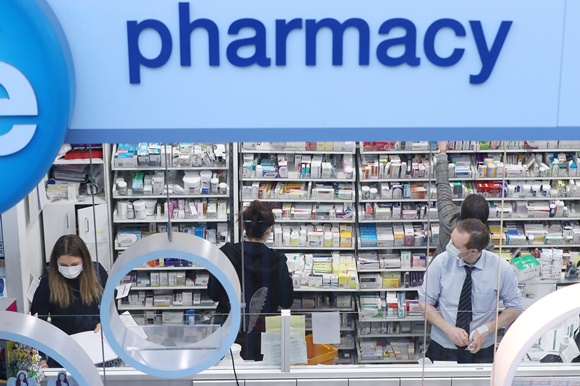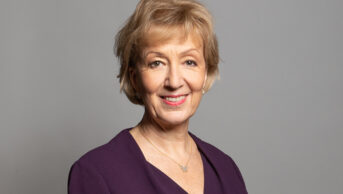
Niall Carson / PA Wire / PA Images
The government led pharmacy staff to believe that wholesalers had “dramatically more” personal protective equipment (PPE) in stock than was the case during the first wave of the COVID-19 pandemic, the Healthcare Distribution Association (HDA) has said.
In evidence given to the House of Commons Public Accounts Committee (PAC) for its report into the government procurement and supply of PPE during the COVID-19 pandemic, the HDA said the centralised PPE stock for community pharmacy “faced considerable challenges”.
The HDA’s comments follow a survey by the Royal Pharmaceutical Society in April 2020, which found that one in three pharmacists were unable to access continuous supplies of PPE.
The PAC report, published on 10 February 2021, said it had seen similar surveys indicating that “at least 30%” of frontline staff from across health and social care reported having insufficient PPE, with organisations left to buy supplies at “hugely inflated prices”.
“The PPE from central government was sometimes not usable and providers told us that emergency helplines referred them to suppliers which did not have PPE,” the report said.
It added that the government’s focus on supporting PPE provision to hospitals “meant assistance to social care providers was neglected”.
However, evidence submitted to the PAC by the HDA in December 2020 said the lack of PPE for community pharmacy was also “overshadowed by the urgent issues faced by secondary care”.
“This is to say, that the centralised PPE procurement for community pharmacy operated by Public Health England (PHE) faced considerable challenges with low levels of stock availability and miscommunication by PHE [and NHS England and Improvement] that suggested that HDA members had dramatically more PPE stocks available than was actually the case,” it explained.
The HDA had warned in May 2020 that its wholesaler members had “almost completely run out” of the PPE supplied by PHE for distribution to community pharmacies, which they had received the previous month.
Commenting on the report, a spokesperson for the Royal Pharmaceutical Society said it had ”called for pharmacists to have access to free PPE much earlier into the pandemic and they should not have had to fund their own supplies”.
“We’re pleased that community pharmacists are now eligible for free of charge PPE via the PPE Portal and we encourage all to apply. Those who had already paid for supplies themselves should also now be reimbursed.”
In its evidence, the HDA also criticised the government’s “lack of transparency” around the early procurement of PPE, stating that “it was impossible for the HDA and members to offer their support in these efforts, as it was unclear what the government’s strategy was”.
“At the beginning of the pandemic when the government signed high value contracts for PPE supply with companies who had little, if any, experience of procuring PPE, engaging healthcare distributors who have long-standing expertise in procuring products from around the world was seemingly not considered,” it said.
“Even when furnished with a priority cabinet office PPE email address, HDA member companies did not receive replies to their offer of using tried and tested supply capabilities.”
The PAC report found that between February and July 2020, the Department of Health and Social Care spent over £12bn on 32 billion items of PPE.
“Government had permission to procure equipment at pace and without tendering under the law, but acting fast did not give it licence to rip up record keeping on decisions,” said Meg Hillier MP, chair of the PAC.
“It did not publish contracts in time and kept poor records of why some companies won multi-million-pound contracts. The cost of emergency procurement — billions higher than the equivalent a year before — highlights how both its pandemic plan and supply of essential equipment were inadequate.
“Frontline workers were left without adequate supplies, risking their own and their families’ lives to provide treatment and care.”
A spokesperson for the Department of Health and Social Care said: “We have been working tirelessly to procure, produce and deliver PPE to over 58,000 settings, protecting our health and social care staff on the frontline of this pandemic.
“As the Public Accounts Committee recognises, the government faced significant challenges in having to rapidly procure PPE at pace in a competitive international market. Thanks to the combined effort of government, NHS, Armed Forces, civil servants and industry we have delivered over 8.1 billion items of PPE at record speed.
“We have a robust processes in place to ensure PPE meets the strictest safety and quality standards before being distributed to the frontline.”


